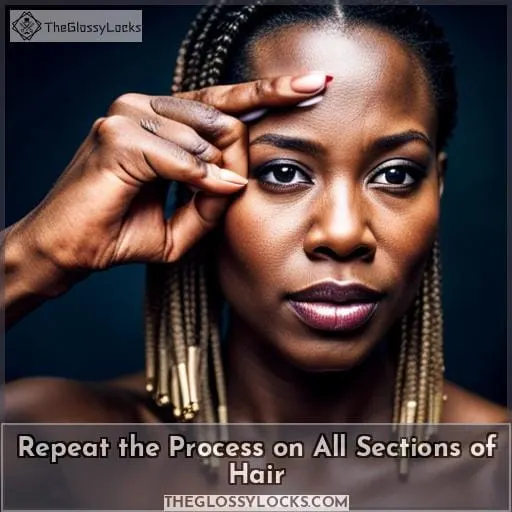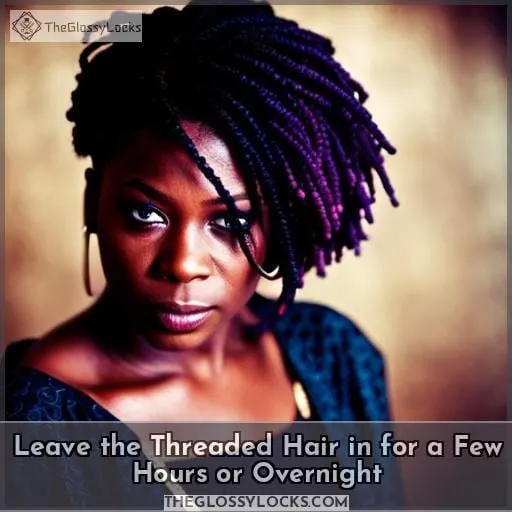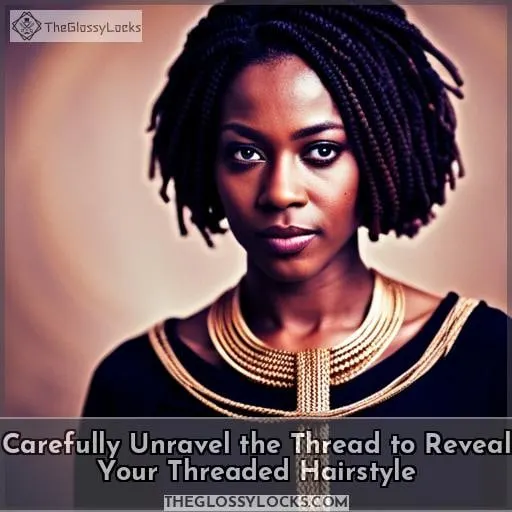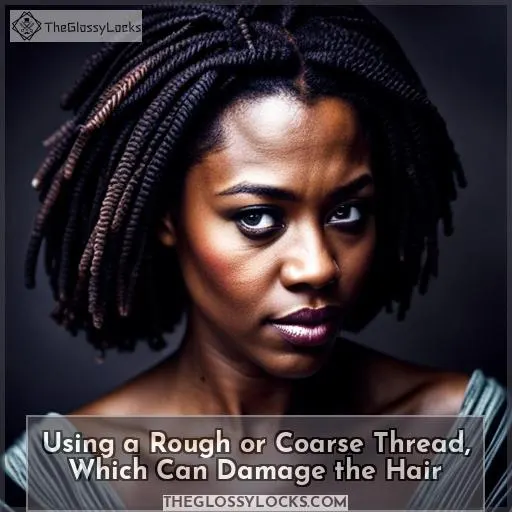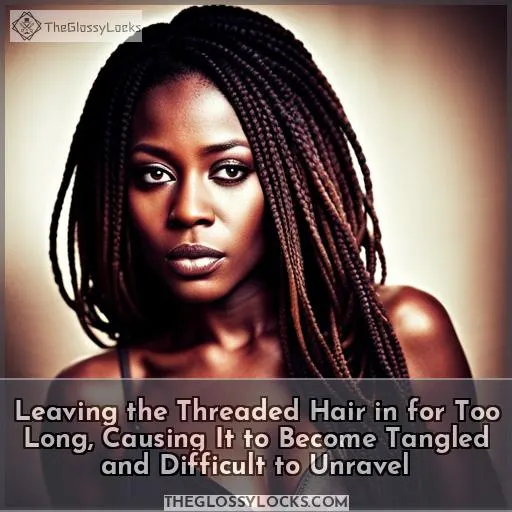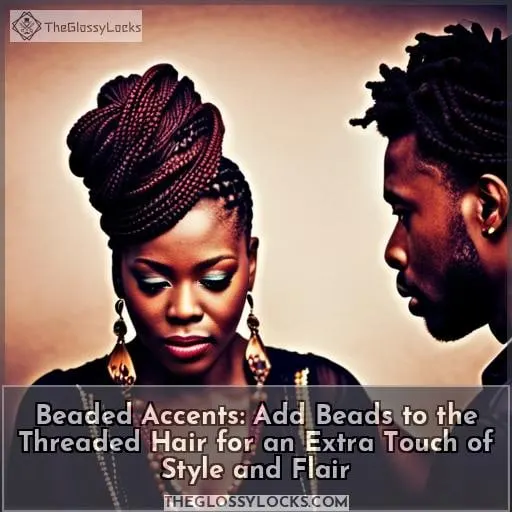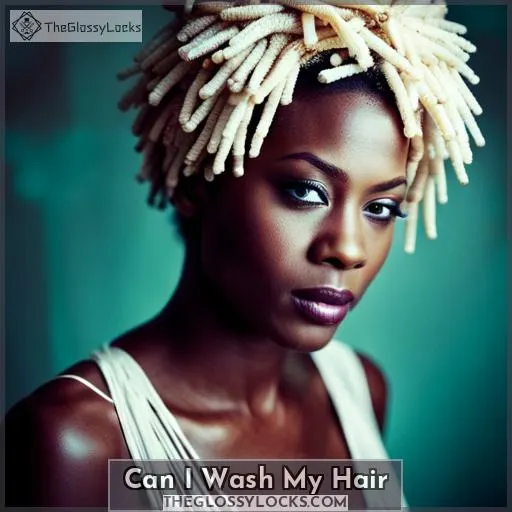This site is supported by our readers. We may earn a commission, at no cost to you, if you purchase through links.
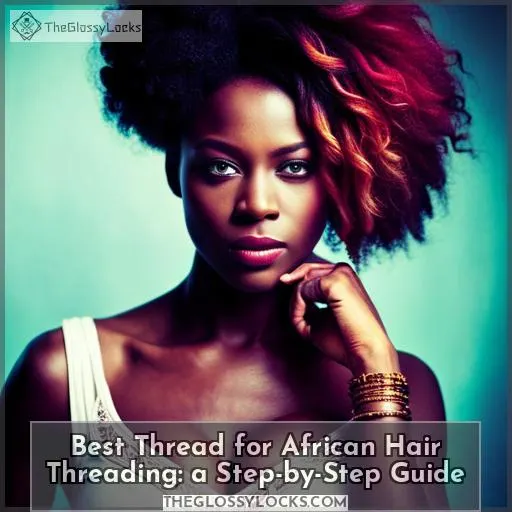 Have you ever heard of African hair threading? It’s an ancient styling technique that has been popular in West African countries for generations. This method uses black thread to wrap sections of the hair, strengthening it without using heat or chemical treatments.
Have you ever heard of African hair threading? It’s an ancient styling technique that has been popular in West African countries for generations. This method uses black thread to wrap sections of the hair, strengthening it without using heat or chemical treatments.
This means it’s a great way to protect your strands and achieve gorgeous styles at the same time.
Wouldn’t it be awesome if you could learn how to do this yourself? We’ve got just what you need: a step-by-step guide on finding the best type of thread for African Hair Threading! From rough and coarse threads that can damage your locks, to leaving threaded hair in too long, all the way up to adding stylish bead accents – we’ll show you everything there is to know about successful African hairstyling with no harm done!
Table Of Contents
- Key Takeaways
- Repeat the Process on All Sections of Hair
- Leave the Threaded Hair in for a Few Hours or Overnight
- Carefully Unravel the Thread to Reveal Your Threaded Hairstyle
- Using a Rough or Coarse Thread, Which Can Damage the Hair
- Leaving the Threaded Hair in for Too Long, Causing It to Become Tangled and Difficult to Unravel
- Beaded Accents: Add Beads to the Threaded Hair for an Extra Touch of Style and Flair
- Can I Wash My Hair
- Conclusion
Key Takeaways
- Choose the best thread type.
- Acrylic yarn is recommended to avoid breakage.
- Avoid using rough or coarse threads that can damage the hair.
- Consider the color, size, material, shape, and cultural significance of the beads.
Repeat the Process on All Sections of Hair
Carefully wrap each section of hair with the chosen thread to ensure your locks are strong and healthy while also creating a unique style.
To get started, make sure your hair is properly moisturized before you begin the technique for optimal protection.
When wrapping the threads around each section, be mindful of tension control – not too tight and not too loose – so that no breakage occurs over time.
Additionally, consider selecting a thread color that will complement or contrast nicely with your natural hue for an added touch to any hairstyle!
African threading offers many protective styling benefits as well as giving you versatility in terms of updos or down-dos depending on the look you’re going for at any given moment.
For nighttime care when sleeping with threaded hair, opt for satin or silk bonnets/scarves to keep it neat throughout its wearability period (up to 6 weeks).
Get creative by experimenting with different colors and textures while using this traditional method – enjoy yourself!
Leave the Threaded Hair in for a Few Hours or Overnight
Once you’ve wrapped all sections of hair with thread, leave it in for a few hours or overnight. This helps to set the style and keep your threaded hair looking neat. Overnight benefits include moisture retention, tangle prevention, and styling options like beaded embellishments that can last up to six weeks before washing.
When choosing the right thread type for African threading, opt for acrylic yarn. It is lightweight yet strong enough to hold its shape without fraying or splitting when pulled too tight. Using acrylic yarn also reduces manipulation on strands, resulting in less breakage over time compared to other types of threads such as cotton yarns.
Cotton yarns may tug at natural hairs while being threaded, causing excessive damage in the long run and potentially leading to receding hairlines if done incorrectly or excessively regularly.
So carefully pick out your materials, do thorough research about how much tension should be applied during wrapping, and moisturize beforehand properly. By doing so, you will not only have a great-looking hairstyle but also healthier and stronger hair.
Carefully Unravel the Thread to Reveal Your Threaded Hairstyle
Gently unravel the thread to reveal your stylishly threaded hairstyle. Take care not to damage your hair while removing the threads. Start by untying any knots at the base of each section and carefully loosen it from there.
This will help maintain tension on that area while unraveling other sections without tugging too much at once.
As you work around, make sure not to pull too tightly or rip out strands. Doing so can lead to breakage and frizziness in those areas later on. Once all sections have been taken apart with gentle hands, you can use a moisturizer or oil for extra maintenance before styling further if desired.
For centuries, African women have traditionally used natural hair threading. This process has become even more popular today due to its ability to protect stretched hair while providing stylish variations through different colored threads.
With proper care during removal and moisture maintenance afterward, anyone can achieve beautiful results from this traditional hairstyle technique safely and easily over time.
Using a Rough or Coarse Thread, Which Can Damage the Hair
Be mindful of the type of thread you choose, as a rough or coarse one can cause damage to your hair. 100% cotton yarn is recommended over nylon thread since it’s more absorbent and less likely to tug on strands.
Choose a color that suits both your style and hair needs, remembering darker shades will be better for durability but lighter colors are great for intricate designs.
Moisturizing before you begin is essential; this helps keep strands strong during wrapping without any breakage occurring in the process! Be sure to use threads that won’t unravel quickly – polyester or acrylic wool work well – while steering clear of those with too much friction which can weaken fragile hairs.
African Threading offers an array of options when it comes to styling natural hair, so make sure you pick wisely according to what best fits your individual needs!
Leaving the Threaded Hair in for Too Long, Causing It to Become Tangled and Difficult to Unravel
It’s important to limit wearing threaded hair for no longer than six weeks, otherwise it can become tangled and difficult to unravel.
While African threading is a popular protective style among the natural hair community due to its ability to stretch the hair without using heat, prolonged threading can be damaging. Over time, knots in threads may form, making them harder to remove when detangling, which could lead to breakage or split ends.
To prevent this from happening, it’s best practice not only to keep your routine hairstyle changes every 6-8 weeks but also to use gentle methods of detangling, such as finger combing or using a wide tooth comb when taking out previously threaded styles.
This method helps preserve length while still achieving desired looks with minimal manipulation over time.
Beaded Accents: Add Beads to the Threaded Hair for an Extra Touch of Style and Flair
You can add beads to your threaded hair for an extra touch of style and flair! Beaded accents are a great way to customize African threading styles, adding texture, color, and depth.
- Color: Choose bright or muted colors that coordinate with the threads used in your hair’s styling pattern.
- Size: Opt for larger-sized beads if you want them to be visible from a distance; smaller ones will create subtle details up close.
- Material: Select materials like glass or wood rather than plastic as they won’t wear down over time due to friction against strands when brushing or combing hair out later on.
- Shape: Try different shapes such as round balls, stars, or triangles depending on what kind of look you’re going for!
- Cultural Significance: If desired, incorporate cultural symbols into bead choices like cowrie shells at the end of braids, which symbolize protection from negative energy and bring luck and wealth according to their origin country’s customs (Ghana).
Adding beaded accents provides stylish embellishments while also deepening its cultural significance by conveying messages about identity through hairstyle design choice variations specific only within certain cultures around the world today! Whether it’s one single bead at each braid tip in some traditional tribes across Africa alluding to strength/power or multiples cascading alongside each other along locks representing beauty, having these adornments incorporated is sure to give any African Threaded Hair look unique character beyond expectation levels!
Can I Wash My Hair
When it comes to African threading, it’s important to remember that washing your hair while threaded isn’t recommended and should be avoided. Washing frequency depends on the type of thread used. Thicker or more absorbent threads shouldn’t stay in for longer than a week.
When moisturizing, opt for water-based products as oil may cause buildup and loosen the threads. Depending on your desired look and hair texture, different varieties of yarns or threads can be chosen from at a fabric store.
Wet or dry threading are both options depending on styling preferences. Wetting will create tight spirals, whereas dry threading allows for looser curls with greater definition due to stretching out sections before wrapping them up in the thread.
With various colors available, you can customize intricate styles with stunning results! For best results, keep your scalp hydrated by using light oils regularly.
Conclusion
In a captivating swirl of creativity, African hair threading is a traditional practice that offers a wide range of possibilities for protecting and strengthening your hair. From subtle colors to eye-catching beads, threading is an art form that can be used to create a variety of different styles.
With the right thread type and careful preparation, African hair threading can help you achieve beautiful, long-lasting looks – without risking the damage of excessive manipulation. So, if you’re looking for a unique, low-maintenance way to care for your hair, African threading may be the perfect option for you.

